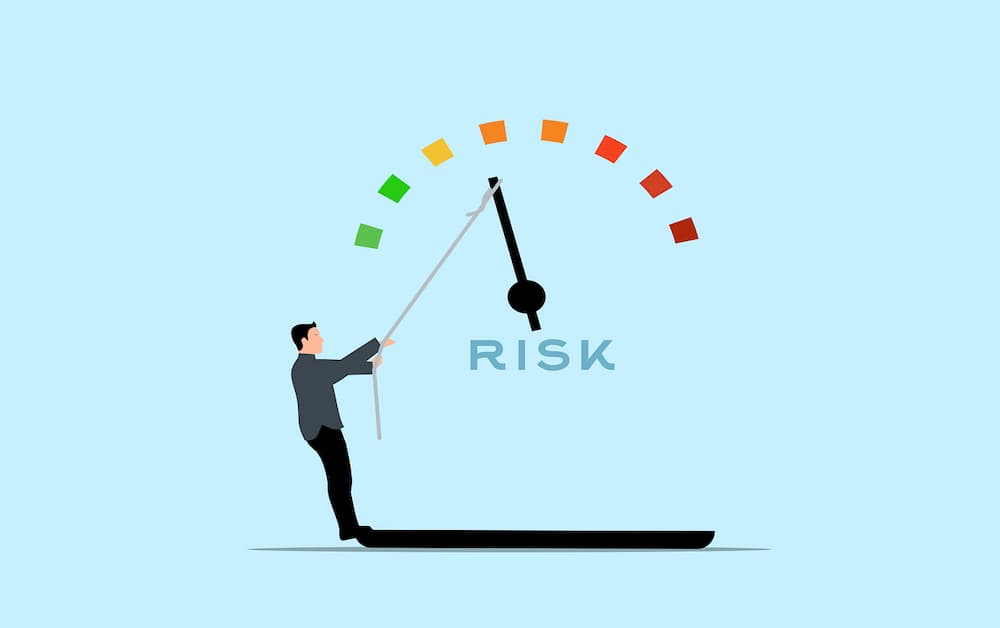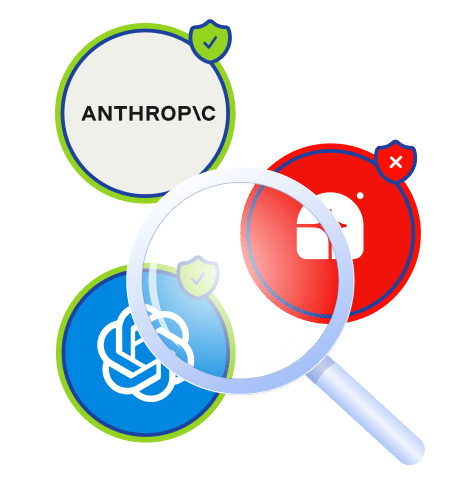Introduction
Organizations increasingly rely on third-party vendors, including integrating artificial intelligence (AI) systems, to support their operations. Partnering with third-party vendors can bring various advantages for businesses, such as cost savings, improved efficiency, and access to specialized expertise. However, it is important to note that this approach poses several potential risks, particularly regarding data security, compliance, and operational integrity.
Therefore, while partnering with third-party vendors can be beneficial, it is crucial to carefully assess potential risks and establish appropriate measures to mitigate them. This article explores the importance of comprehensive vendor assessment in managing third-party AI risks effectively.
Understanding third-party AI risks
The deployment of third-party artificial intelligence (AI) systems carries several risks arising due to the inherent complexity of AI technology and the potential for unforeseen consequences. These risks can manifest in various ways, including data breaches, cyber threats, supply chain disruptions, and regulatory non-compliance. Organizations that adopt AI systems from third-party vendors must recognize the intricate interplay between these systems and their risk exposure. They need to take a proactive approach to mitigate potential harm effectively.
This may include conducting thorough risk assessments, implementing robust security protocols, and ensuring compliance with relevant regulations. Furthermore, organizations must establish clear lines of responsibility and accountability for managing third-party AI system risks involving all relevant stakeholders, including vendors, suppliers, and customers. By taking a comprehensive approach to risk management, organizations can minimize the potential for harm and maximize the benefits of third-party AI systems.
The vendor management lifecycle
Implementing a well-designed and robust vendor management lifecycle is crucial to comprehensively mitigating third-party AI risks. This lifecycle comprises several phases: vendor selection, contract negotiation, performance monitoring, and termination. Each phase demands meticulous attention to detail to ensure third-party AI vendors align with organizational standards and regulatory requirements. The first phase involves vendor selection, where organizations must identify potential vendors that can fulfill their requirements and align with their overall objectives. Factors such as vendor experience, expertise, reputation, and financial stability must be considered during this phase.
Once vendors have been shortlisted, the next phase involves contract negotiation, critical to establishing clear expectations and responsibilities for both parties. The contract should include service-level agreements, data protection, and security measures. After the contract is finalized, the third phase involves ongoing performance monitoring to ensure that vendors meet their obligations and deliver services as agreed upon. This phase involves regular reviews and assessments of vendor performance, including factors such as quality, timeliness, and compliance.
Finally, the last phase of the vendor management lifecycle involves termination processes, which should be well-defined and planned for in advance. In the event of non-compliance or other issues, contracts must include termination provisions, and organizations must follow a structured process to ensure a smooth transition to an alternative vendor. A comprehensive vendor management lifecycle is essential to mitigate third-party AI risks and ensure vendors align with organizational standards and regulatory requirements.

Conducting vendor risk assessments
An effective third-party risk management strategy must include conducting thorough vendor risk assessments. This process is crucial for organizations to evaluate their third-party vendors’ security posture, data handling practices, and AI governance frameworks. By employing a systematic approach that involves a comprehensive evaluation of the vendor’s risk profile, organizations can identify potential risks early on and implement proactive measures to mitigate them.
This, in turn, helps safeguard the organization from any adverse outcomes that may arise from working with third-party vendors. Therefore, organizations need to prioritize vendor risk assessments as a cornerstone of their risk management framework and ensure that they are conducted regularly to maintain an up-to-date understanding of the risks posed by third-party vendors.
Ongoing monitoring and management
An effective third-party AI risk management program requires continuous monitoring and management. This includes implementing mechanisms for real-time monitoring of vendor activities such as AI system performance, data access patterns, and compliance adherence. Organizations must remain vigilant and proactive to detect and address emerging risks. Continuous monitoring allows them to identify potential issues before they become major problems.
Additionally, organizations must comprehensively understand their vendor’s AI systems and how they operate. This includes understanding how the systems use data, make decisions, and comply with regulatory requirements. By taking these steps, organizations can mitigate risks and ensure that their AI-powered systems operate safely and effectively.
Implementing effective contract management
Effective contract management is crucial for mitigating third-party AI risks and ensuring compliance with contractual obligations. Organizations should adopt standardized contract templates that incorporate provisions for data security, confidentiality, liability, and dispute resolution specific to AI systems.
Additionally, contracts should outline clear termination clauses and exit strategies to mitigate risks associated with vendor non-performance or breach of contract. Regular contract reviews and updates enable organizations to adapt to evolving regulatory requirements and emerging threats, ensuring that contractual arrangements remain robust and aligned with organizational objectives.
Emphasizing data privacy and confidentiality
Protecting sensitive data and preserving confidentiality is paramount in managing third-party AI risks. Organizations must establish stringent data privacy policies and procedures governing third-party vendors’ collection, storage, processing, and data sharing.
Implementing data encryption, anonymization techniques, and access controls helps mitigate the risk of unauthorized data access or disclosure. Moreover, organizations should conduct regular audits and assessments to verify compliance with data privacy regulations and contractual obligations, holding vendors accountable for safeguarding sensitive information and upholding confidentiality standards.

Cultivating a culture of security awareness
Promoting a culture of security awareness among employees, vendors, and stakeholders is essential for effectively mitigating third-party AI risks. Organizations should provide comprehensive training and education programs covering cybersecurity best practices, data protection policies, and regulatory compliance requirements.
Encouraging proactive reporting of security incidents, vulnerabilities, and suspicious activities fosters a collaborative approach to risk management and enables timely detection and response. By instilling a sense of responsibility and accountability for cybersecurity across the organization, organizations can strengthen their defense against external threats and mitigate the impact of third-party AI risks on business operations and reputation.
Adapting to emerging risks and technologies
Organizations must remain vigilant and adaptable to emerging risks and technologies associated with third-party AI in an ever-evolving threat landscape. Proactively monitoring industry trends, regulatory developments, and technological advancements enables organizations to anticipate potential risks and opportunities, facilitating informed decision-making and strategic planning.
Collaborating with industry peers, regulatory bodies, and cybersecurity experts fosters knowledge-sharing and collective action to address common challenges and enhance resilience against emerging threats. By embracing innovation while prioritizing risk mitigation, organizations can stay ahead of the curve and navigate the complexities of third-party AI risks with confidence and agility.
Leveraging AI technology for risk management
Οrganizations face a growing number of risks associated with third-party AI technologies. These risks include data breaches, cyber-attacks, and regulatory compliance violations. To mitigate these risks, organizations can rely on AI-powered analytics tools to analyze vast datasets and identify anomalous behavior that could indicate potential risks. By leveraging AI’s predictive capabilities, organizations can anticipate and prevent possible risks before they even occur.
AI can also automate and streamline risk remediation processes, allowing organizations to respond quickly and effectively to any issues. By embracing AI technology, organizations can significantly enhance their third-party AI risk management efforts, bolster their resilience against evolving threats, and improve their ability to protect sensitive data and maintain regulatory compliance.
Developing a resilient supply chain
Third-party AI risks extend beyond individual vendors to encompass the entire supply chain. Organizations must adopt a holistic approach to supply chain risk management, identifying dependencies, vulnerabilities, and potential points of failure. Collaborating closely with key stakeholders, including vendors, suppliers, and logistics partners, enables organizations to develop a resilient supply chain architecture that can withstand disruptions and mitigate third-party AI risks effectively.
By diversifying suppliers, implementing redundancy measures, and fostering transparency and collaboration, organizations can enhance supply chain resilience and minimize the impact of third-party AI risks on business continuity.

Implementing human oversight
Artificial intelligence (AI) technology has emerged as a game-changer for risk management, offering unparalleled efficiency and accuracy in identifying and mitigating risks. However, there are limitations to relying solely on AI-based risk management processes. Human oversight remains indispensable in ensuring that the risk management strategies align with the contextual understanding, ethical considerations, and legal standards.
While AI technology can analyze vast amounts of data in real-time, it lacks the subjective judgment, empathy, and intuition innate to humans. Human intervention can help contextualize the risks the AI system identifies, considering factors such as social, cultural, and economic nuances that machines may overlook. Moreover, human oversight can ensure that the risk management strategies align with the organization’s ethical standards, legal obligations, and stakeholder expectations.
Therefore, organizations should balance AI automation and human intervention in risk management processes. While AI technology can help automate routine tasks and flag potential risks, human oversight can provide the necessary checks and balances to ensure that risk management strategies are effective, ethical, and accountable. By combining the strengths of AI and human expertise, organizations can mitigate risks effectively while upholding ethical standards and building trust with stakeholders.
Enhancing vendor performance
Organizations that rely on third-party AI vendors should prioritize enhancing vendor performance to mitigate third-party AI risks effectively. They can establish key performance indicators (KPIs) related to AI system functionality, data security, and regulatory compliance to achieve this goal. These KPIs will provide benchmarks for vendor performance evaluation, enabling organizations to assess their vendors’ performance against these standards regularly.
Regular performance reviews and feedback sessions are essential to address deficiencies and promptly foster continuous improvement. By conducting these reviews, organizations can ensure that their vendors align with their objectives and meet the necessary requirements. Moreover, incentivizing and rewarding high performance can help cultivate a culture of excellence among third-party AI vendors, promoting operational resilience while reducing risk exposure.
Conclusion
In conclusion, managing third-party AI risks requires a comprehensive and proactive approach encompassing vendor assessment, risk management strategies, and compliance with privacy regulations. Organizations can mitigate the potential risks associated with AI technologies by understanding the unique challenges posed by third-party AI systems and implementing robust risk management frameworks.
Through ongoing monitoring, timely action, and leveraging emerging technologies, businesses can safeguard their sensitive data, protect against cyber threats, and ensure the reliability and integrity of third-party AI systems.








